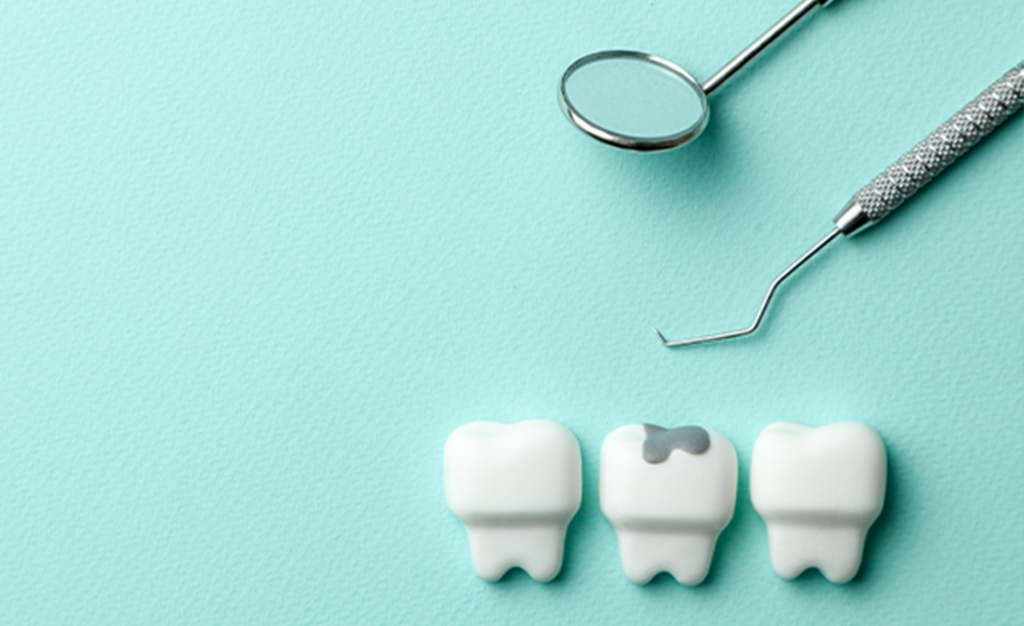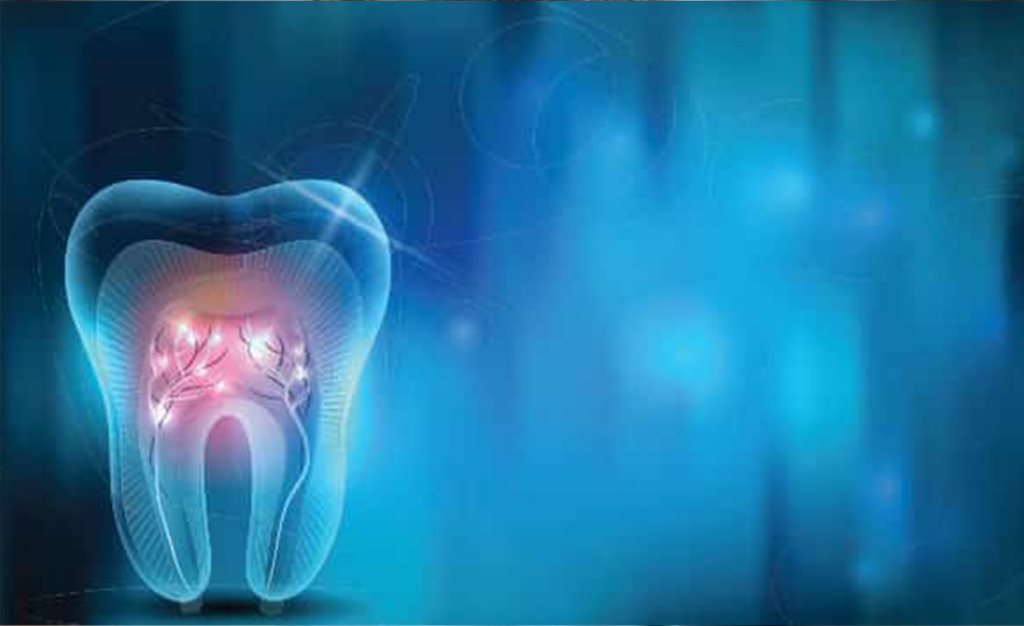I often hear friends, family and new patients complaining about how difficult it is to floss, especially after having a procedure done, such as a dental filling.
These fillings can cause problems, especially when done, with little to no anatomy. Even a little anatomy can go a long way.
Having no marginal ridge makes it difficult to feel for a groove to guide the floss into. It’s why a little embrasure can go a long way.
The anatomy of an “embrasure”
In a healthy set, the teeth are aligned in a smooth, curved row with each tooth touching the tooth next to it called “contact” with healthy gum tissue in between them called ‘papilla.”
The area below the “contact” or between the “contact” and “pailla” is called the “embrasure.”
The “contact” is the area where two proximal surfaces touch.
An “embrasure” is visually represented as the dark V-shaped space between two adjacent teeth that extends beyond the “contact” area.
Types of “embrasures”
“Embrasures” are named according to their location, and from where the teeth are viewed facially (lingually), incisally (occlusally) or cervically from the contact area.
“Incisal (Occlusal) embrasures” and “Gingival (Cervical) embraces” can be viewed facially (lingually).
“Incisal (Occlusal) embrasures” are the spaces above the incisal and occlusal “contact” areas bounded by the marginal ridges.
The “Gingival (Cervical) embrasures” occur in the interproximal space and are larger than the “Incisal (Occlusal) embrasures.”
When viewing the teeth incisally (occlusally), “Gingival (Cervical) embraces” are named as “Labial (Buccal) embrasures” and “Lingual embrasures” based on their location.
Factors affecting the appearance of an “embrasure”
The appearance of an “embrasure” is affected by the following factors.
- The Shape Of The Teeth
We will discuss this factor with a case example.
When the shape of the teeth is rectangular, the flat sides will lay fused, side-by-side to each other with nil space between them, as shown in the pic below.
 Figure 1
Figure 1
So, how is anyone supposed to floss this?
The above image (Fig 1) is an example of tooth contact between #29 and #30 that is too tight. An ideal contact with these teeth should be 1-1.5 millimeters (mm) in length. This contact spans the entire length of the filling, which is easily 3-4 mm.
The buccal embrasure is there but it is not deep enough. It should be about 1 millimeter deeper. We could easily make the adjustment with a fine mosquito bur and a slow flicking motion toward the center of the contact.
The lingual embrasure was also there, but not deep enough. It should be about 1 millimeter deeper. We fixed this problem with a fine mosquito bur and a slow flicking motion toward the center of the contact.
The occlusal embrasure is also not visible in this image and it looks as if #29 DO is attached to #30 MO. Again, we adjusted this by running a fine mosquito bur with very light pressure across the fillings.
The occlusal embrasure is what leads the floss between the teeth and helps tremendously with flossing as most patients can not see into that area.
- The Shape And Size Of The Papilla
Another critical factor related to the visual identity of embrasures is the shape and size of the papilla between the teeth.
With aging, the height of the papilla naturally decreases, and the embrasures begin to make a prominent appearance, even in an ideal set of unworn, healthy, and straight teeth.
On the other hand, misaligned and crooked teeth overlap and allow little room for “papilla” between interdental “embrasures.” In such cases, when the orthodontist corrects the alignment, the problem of the absence of “papilla” gets exposed, and the glaring dark triangles or “embrasures” become evident. Sometimes, the patients actually think that their orthodontist caused the “embrasures.” But this is untrue as there was no “papilla” to begin with.
- Gum Recession
Gum recession can also affect the appearance of the dark black triangles between the teeth. When gums recede, it will happen initially in the interdental papilla.
There can be many reasons for gum recession, such as genetics, teeth grinding, the position of the teeth, orthodontic clenching, gum disease, or osteoporosis.
Gum recession can lead to serious problems. When left untreated, it exposes more of the enamel that our gums should protect, causing gum disease, putting the individual at risk for teeth, gum, tissue, and jaw bone loss.
- Poorly Executed Dental Procedures
Poorly executed dental treatments can affect the appearance of “embrasures.”
It could be anything from dental fillings with little or no anatomy or marginal ridge or an over-aggressive cosmetic procedure such as gum contouring and reshaping, ill-fitted or ill-sized dental crowns and porcelain veneers.
The functional and esthetic benefits of “Embrasures” in Restorations
“Embrasures” serve important purposes that demonstrate the indispensable association between function and esthetic.
They aid in mastication and tooth stability, which promote better grinding of food. While “embrasures” offer a spillway for food to escape during chewing, boosting the self-cleansing process, they are also highly susceptible to the formation of excessive plaque that can lead to more severe orthodontic problems.
A younger set of teeth has a larger “embrasure” space, enhancing the smile. An older group of teeth has less “embrasure” space, making them look unpleasant and prematurely age the smile.
But What Does An Ideal Set Of Teeth Look Like?
As orthodontists, our jobs are not purely technical but also artistic and creative as we set out to mimic nature in our restorative endeavors. The more ambitious ones even outdo nature at its best work.
Several factors influence our interpretation of what the “ideal” should be in each orthodontic treatment procedure that we embark on. However, one constant remains.
Before venturing into any dental restorative treatment, it’s vital to know what the ideal set of teeth (however rare to find naturally) look like both from a functional and esthetic perspective. It will help gauge what corners to chip away literally or comprise within the acceptable range during the restorative procedure.
The ideal set of teeth has a nearly 50:50 relationship between the length of the contact area and the height of the papilla. So, a perfect set of teeth would have 50% of the overall tooth length as “contact” and the remaining 50% as “papilla.” Also, the “papilla” would be at the same height, incisal-gingivally across all teeth.
On a side note, notice how the anatomy of the filling has recreated the contour of the buccal cusps and the central ridge. This will help with the overall occlusion and mastication.
Any dental situation that deviates from the above “ideal” set of teeth as per various studies is bound to cause issues for the patient functionally and esthetically.
Let’s say the papilla completely fits into the space below the “contact,” and there is no visible embrasure. Or the “contacts” touch each other, but the “papilla” doesn’t completely fill enough of the interdental embrasure space.
Occlusal anatomy here is key to a comfortable and lasting bite.
Let’s discuss this with an example of a healthy embrasure.
 Figure 2: Shows an example of healthy embrasures and the right amount of contact.
Figure 2: Shows an example of healthy embrasures and the right amount of contact.
 Figure 3: Shows a different angle, same teeth as Figure 2.
Figure 3: Shows a different angle, same teeth as Figure 2.
In this example, the marginal ridge on #18 could have been slightly more pronounced.
This image most clearly demonstrates the depth of an embrasure. Compared to Fig 1, notice how the lingual embrasure gets much further toward the center of the marginal ridge. A molar to molar contact is typically 1.5-2mm in length.
Please note that the image does not clearly show the buccal and lingual embrasures.
What Are The Restorative Treatment Options For You?
Gingival embrasures are great for guiding floss.
Mesial (forward side of the tooth) and distal (backside of the tooth) embrasures at the right size will ensure that even if food gets impacted, it will come out quite easily, decreasing the chances of developing periodontal disease or affecting the appearance of the smile.
Before drafting a customized treatment plan, a detailed examination and understanding of the patient’s etiology is a must.
Various treatment options for gingival embrasures are available such as “interproximal reduction” or “reproximation”, hyaluronic acid, resin composite fillings, bonding, veneers, surgery, deep tissue cleaning and gum grafting, laser gum recontouring and pinhole technique.
Typically, all the treatment methods comprise a combination of orthodontic, periodontal, and restorative surgery.
Below is an image before and after our restorative procedure for “embrasures.” The materials used were the garrison matrix ring system and VOCO composite.
 Figure 4: This contact was before we could adjust it. The patient was complaining about the inability to floss and floss shredding! The embrasures need to be emphasized.
Figure 4: This contact was before we could adjust it. The patient was complaining about the inability to floss and floss shredding! The embrasures need to be emphasized.
This is an example of poorly done contacts. In a case like this, the #2 MO looks like it was adequately bonded to the tooth, but #3 DO looks like there was some contaminant on the buccal side. The filling looks like it is separating on the mesial wall.
If we don’t know the age of these fillings, the most conservative approach would be to adjust the embrasures and monitor the fillings hereon.
To adjust the embrasures, we would deepen the lingual and buccal embrasures by roughly 1.5mm. The angle of the bur should follow the natural flow of the cusps as shown in the image below.
 Figure 5: This photo is modified and edited on 3 May 2022
Figure 5: This photo is modified and edited on 3 May 2022
The black lines again show the angle of the lingual and buccal embrasures and the blue dotted line shows where the occlusal embrasure should be.
DO NOTE that when adjusting these fillings. The natural tooth should NOT BE TOUCHED. These fillings are EXCESSIVE and there is nothing we need to do on the natural tooth. We just need to trim the fat of the filling.
 Figure 6: Here’s the “after treatment” image of nice flowing contacts.
Figure 6: Here’s the “after treatment” image of nice flowing contacts.
If you’re looking for Restorative Dental Services In Palo Alto, contact us or schedule an appointment with the best dentist in Palo Alto.
Disclaimer: We routinely draw upon public health resources to inform our write-ups. Information in this article may be drawn up from multiple public health sources, including:
American Dental Association’s MouthHealthy.org
California Dental Association
American Dental Association’s Action for Dental Health
Centers for Disease Control & Prevention
Webmd
Healthline
Laser Dentistry




